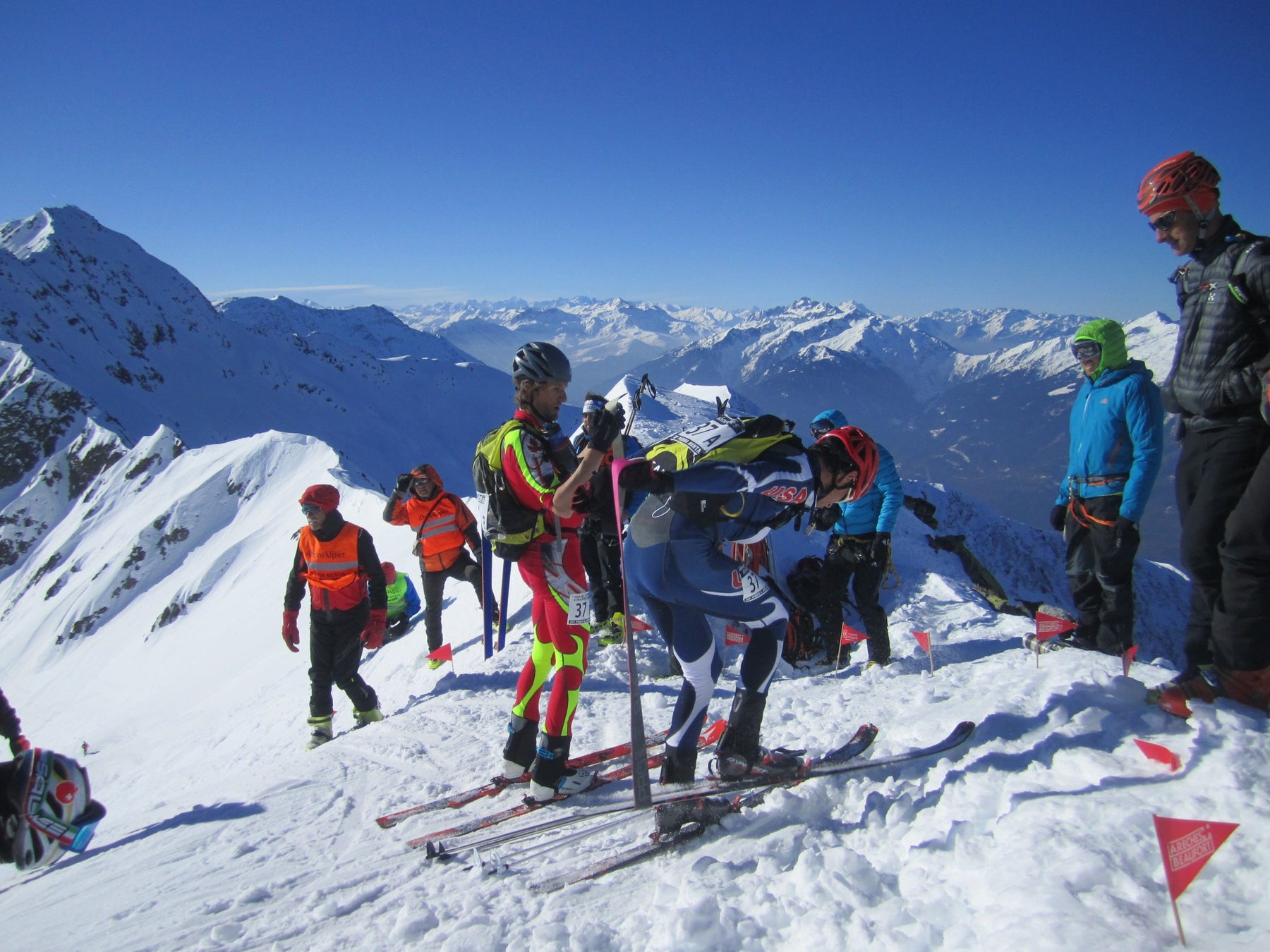
Beta for a Skimo Teams Race
Insider Tips
Eric Carter, Canadian (actually American - but I will spearhead the movement to claim him as our own) skimo legend, coach, runner and all-around mountain fella has done his fair share of skimo. As we head into some of the bigger races on the skimo calendar, especially as Steep Dreams (a Kicking Horse classic) draws near, we thought it best to seek out some advice from him on how to nail a skimo teams race. This is what he had to say.
It's teams race season! Whether you're skiing Steep Dreams, the Power of Four, or the Patroullie de Glaciers, it pays to be ready for these big events. Small mistakes can cost big time and being unprepared can mean you're out of the event before it's even gotten underway.

Credit: Maur Mere Media
Race Strategy
Talk to your partner and make a plan for your race strategy. Know how many climbs and descents make up the race and roughly how they compare (ie. climb 1 will take twice as long as climb 2). Getting a copy of the race map/profile is helpful for this.
Plan the Descents
Typically one skier is stronger. Let that skier lead the descents so the weaker skier can follow comfortably and not wonder where they’re going or if they’re about to ski off a cliff. If the weaker skier has someone to follow, they'll be able to open it up more! To do this, the leader also has to look back occasionally! It’s critical to stay in sight. I’ve seen the stronger skier blast away leaving their partner wondering which way to go! If you're leading, you need to shoulder check and make sure they’re able to use you as a reference. Only when the descent is super obvious, open it up and start your transition ahead of time.
 Wait for your gal or lad.
Wait for your gal or lad.
Credit: Maur Mere Media
Towing
The tow strap keeps you together and allows the fitter skier to give even a slight boost to the weaker skier. It keeps you from getting separated. You can even switch if the stronger skier gets tired! Use the strap as much as possible. Look at the top WC skiers and even though they are closely matched, one is often towing.
Check the length on your tow strap! It should be a solid piece of cord with an additional length of bungee tied to it. You want to be close enough that there’s not a big awkward gap between you and not so close you ski on the leaders tips.
Practice kick turns with the strap: once the leader has gone around the corner they need to ease off to allow their partner through it as well. You don't want to drag them through it!
Plan your Food Carefully
Teams races are often long. Shoot for ~200 cal/hr and get a mix of solid (or gel) and liquid calories. Depending on the race and weather, a camelback bladder may be useful (when it’s warm) but if it’s going to be cold, the bladder hose will freeze and an insulated flask or water bottle in your suit will work better.
 When in doubt, get the tow out.
When in doubt, get the tow out.
Credit: Eric Carter
Work Together at Transitions
Ski in next to each other and drop your poles between you. If one person takes out food, pass a bite to your partner. If one person has issues with the transition or just arrives a few sec later, the partner can help transition their second ski (for skins on).
Whoever finishes the transition first picks up BOTH pairs of poles and hands them off when the other is ready!
Dial in your Crampons Before the Race
This happens so often! We don’t use our race crampons much and they loosen after the first use. Ideally, do a day skiing and booting in your race crampons before the race, then readjust. Otherwise, run around in grass and then readjust. They should be as tight as possible (especially the dyneema link ones!).
Dyneema linking bars are lighter but can be harder to adjust. Metal bars might be slightly quicker to put on.
Do your crampons have enough points? Some races require 10 point crampons but some "racing" crampons have 8. Some races require steel front points only and some require full steel toe pieces. Some are fine for all-aluminum.
 The better prepared you are, the more fun you'll have.
The better prepared you are, the more fun you'll have.
Credit: Maur Mere Media
Figure out how to store it. The harness should be on from the race start with the lanyard girth hitched to the belay loop. Sometimes I start the race with the lanyard ends stuffed in my pack's crampon pocket. You should experiment with wrapping the lanyard around your waist and clipping back onto itself. You don't want it to slip down over your butt but you also don't want it too tight.
For rappels, look for simple to manipulate gear. Petzl Reverso and Edelrid slide lock carabiner are my picks.
Pack your Bags Together
If you need to get clothing or gear out, have your partner do it for you so you don’t take the pack off. This should be a really quick maneuver at a transition. Getting out the emergency skins for example or getting out sunglasses at sunrise.
A spare pair of sunnies in one pack is never a bad idea. The other partner can carry a spare pair of skins. If there's a crash or you forgot something at the start, this can be a life saver!
Temperature Management
High elevation races (Mezzalama for example) are often much colder than expected (+5 in the valley, -15 at the summit) so the sweaty skin suit is often not enough. I’m often willing to sacrifice a bit of weight in the pack to have puffy gloves, insulated overpants, a wind shell, and a light puff jacket. These might be the difference between finishing on a cold day and having to stop your race at a bivouac and ski back to the valley after warming up (often Euro races don't let you continue racing if you stop in a hut).

Layering strategy and harness setup with Via Ferrata lanyard on show.
Check Gear Lists!
Check that your gear has the exact required markings according to the gear list. Is your ice axe long enough? Is your rope half rated? Do your insulated pants have 800g of insulation? Even if a piece of gear is advertised as being for skimo, it may not meet the requirements of some races! Some races check your gear before the start and have the option for you to buy exceptionally overpriced gear on the spot (PdG) while others check at the finish and you risk a DQ.
Team races are some of the most fun we can have in our sport but they're long and often complex. All of these are lessons I've learned the hard way so use my experience to your advantage!




